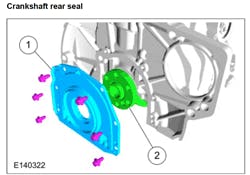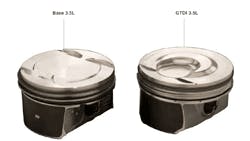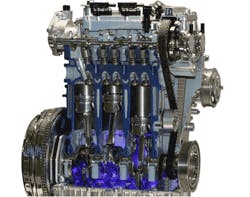In May 2009, Ford began mass-producing an engine that has changed every vehicle it finds its way into. With the introduction of the EcoBoost engine family and its ability to deliver horsepower and torque normally reserved for the largest displacement naturally aspirated engines a V6 F150 with a trailer behind it or a 3 cylinder “hot hatch” now seems perfectly natural.
Yes, those numbers are good but Ford has another EcoBoost in the stable that produces 125 hp per liter and 148 foot-pounds. If we were talking about the Mustang GT producing this kind of power it would be sitting at 625 horsepower and 740 foot-pounds of torque all available from 1400-4500 rpm. Turbochargers sure are cool but this monster is really not a monster at all. It is the smallest of the EcoBoost engines with 3 cylinders and 1.0L of displacement. We might expect something this powerful to get horrible gas mileage and be mostly useless at low speed but the numbers look like 31mpg city/ 43 highway and 9.3 seconds to 60 mph. So enough with the specs let’s see how Ford makes such a small engine work. Be forewarned there are a number of technologies that may challenge your current beliefs regarding engine design.
The rear main seal retainer is moved to the back of the block to allow the rear main cap to have more rigidity.
To round out the rest of the bottom end you will probably notice that this engine does not have a balance shaft. Ford decided that they rob too much power instead applying a special misbalance to the flywheel to make this engine run smooth. The connecting rods are the powdered metal variety Ford has been using for many years. EcoBoost engines get a slight different metallurgy to make their rods stronger. The pistons are special in all EcoBoost engines to accommodate the direct injection nozzle mounted over the top of them. In Figure 3 you can compare the 3.5L direct injection piston on the right to the conventional DOHC 3.5L on the left. This is typical of EcoBoost piston design and yields a 10.0:1 compression ratio but runs on regular fuel.
Bolted to the bottom of the block is a large oil pump reminiscent of a race car’s external oil pump. The oil pan is a wet sump design but the oil pump is driven by a special Gilmer Drive belt that is submerged in oil as is the engine’s timing belt. Rubber timing belts offer quiet operation but cause frictional losses. Timing chains in applications like this cause frictional losses through the necessary timing chain guides. This belt design has been in use in commercial applications and Ford is confident that with reasonable and correct oil maintenance these belts are reliable for 150K miles.
Ford uses a returnless lift pump that feeds low-pressure (about 65 psi) fuel to the high-pressure mechanical pump that runs off of the cam. It generates up to about 2150 PSI. To ensure quick starts and adequate fuel to the high-pressure pump the Fuel Pump Control Module (FPCM) is triggered by the Body Control Module (BCM) when the interior lights come on. This will prime the system prior to start. Ford has also replaced the inertia switch with a signal generated by the Restraints Control Module (RCM) to inform the FPCM that an accident has occurred. This will turn off the low-pressure side of the system. Since most of these vehicles are push-button start, cycling the button on and off or the key on and off and back on will reset the system.
The main thermostat allows bypass when engine speed exceeds 3,000 rpm to avoid excess pressure. The block thermostat begins opening at 158 degrees. When it reaches 185 degrees, Phase 2 begins. In this mode, the small cooling system works much like conventional cooling system bypass systems circulating coolant throughout the engine and heater bypassing the radiator until the engine reaches 222 degrees and the main thermostat opens bringing the entire cooling system online.
This small but mighty engine has taken advantage of seemingly every possible means to save and reuse heat energy. Its light-weight and high efficiency give the Fiesta great handling and near hybrid gas mileage. Some serious forward thinking for a company who, only a few years ago, seemed to build small cars as a CAFE adjustment for pickup truck sales. The fun factor is high and the technology is impressive.







